
RANDOM PAGE
SITE SEARCH
LOG
IN
SIGN UP
HELP
To gain access to revision questions, please sign up and log in.
A2
Transmitters and the Law
This circuit can not legally be connected to an antenna!
It's power is so low that even with an antenna. it's range would be only a few metres.
Transmitter Details

This transmitter circuit has been built and tested and it has a range of a few feet if no antenna is connected.
- The input transducer is an Electret microphone. R1 provides DC power for the FET pre-amplifier built into the Electret microphone.
- Audio signals cause changes in the FET current and this causes the voltage across R1 to vary.
- C1 couples the audio AC output from the microphone to the next amplifier stage. This coupling capacitor blocks DC potentials.
- R2 and R3 form a voltage divider providing a 6 Volt line (50% of the power supply).
- C2 is a decoupling capacitor. It guarantees that there are no AC voltages at point A in the circuit.
- R4 ensures that the DC voltage is 6 Volts at the non inverting input (pin 3) of the op amp.
- R5 and R6 control the gain of the op amp.
- Gain = 1 + Rf / R1 = 1 + 220 / 3.3 = 67.7
- In a normal op amp circuit, R5 would be connected to ground and a -12V supply line would be needed.
- In this circuit, R5 is connected to point A and the -12 Volt line is not needed.
- The op amp is a 741 but almost any pin compatible device should work.
- R7 couples the op amp audio output to D1 and provides DC reverse bias across D1.
- R7 is large to prevent RF signals escaping from the oscillator circuit.
- D1 is a 5 amp rectifier diode. It is being used as a variable reactance diode. When the diode is reverse biased, virtually no current flows but there is some capacitance. If the reverse bias voltage is increased, the capacitance decreases. This makes a voltage controlled capacitor. The DC output of the op amp reverse biases the diode. The audio output from the op-amp varies the bias voltage and causes the capacitance of the diode to change. This changes the transmission frequency. In this way, Frequency Modulation is produced. Various diodes were tried and this one worked best. It is possible to buy varactor diodes which would work better.
- D1, C3 and C4 with the coil form a tuned circuit which resonates at about 100 MHz in the middle of the FM radio band.
- The MPF102 (available from Farnell Electronics) is connected as a source follower with a useful current gain.
- The source current flows through one turn of the four turn coil. This current induces a voltage across the whole coil and this is fed to the gate. This is positive feedback and the circuit oscillates at the resonant frequency of the tuned circuit.
- This is a Hartley oscillator with modified tuning capacitors to allow frequency modulation with the varactor diode.
- C4 is a fixed 22 pF capacitor. The circuit would be easier to get working with a trimmer capacitor covering 5 to 30 pF.
- C5 is a decoupling capacitor. It prevents RF voltages on the FET drain.
- R8 limits the DC current through the FET and ensures the device operates inside safe limits.
- D2 is a polarity protection diode. It protects the circuit if the power supply is connected the wrong way round.
- C6 and C7 are decoupling capacitors. C7 works well at low (audio) frequencies and C6 works well at VHF radio frequencies.
Construction
This can not be built onto prototype boards because the stray capacitance between the tracks is larger than the wanted circuit capacitances.
- Here are some photos showing the "dead bug" construction method on a re-used defective circuit board.
- Unused op amp pins have been snipped off. Op amp pin 4 has been bent flat and soldered to ground. This secures the chip to the board.
- The construction is not pretty because a lot of experimentation and modification was needed to get the circuit working well.
- An important goal is to have everything rigid, secured and not flopping about. Wires were kept as short as possible.
Beware: Some of the diodes are being used to support the wiring and are not electronically relevant!
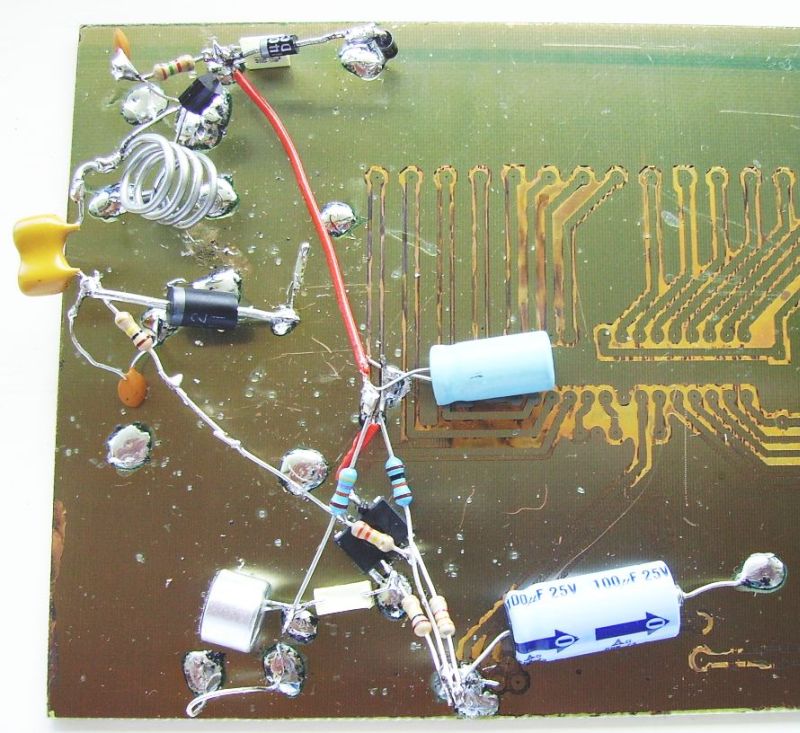
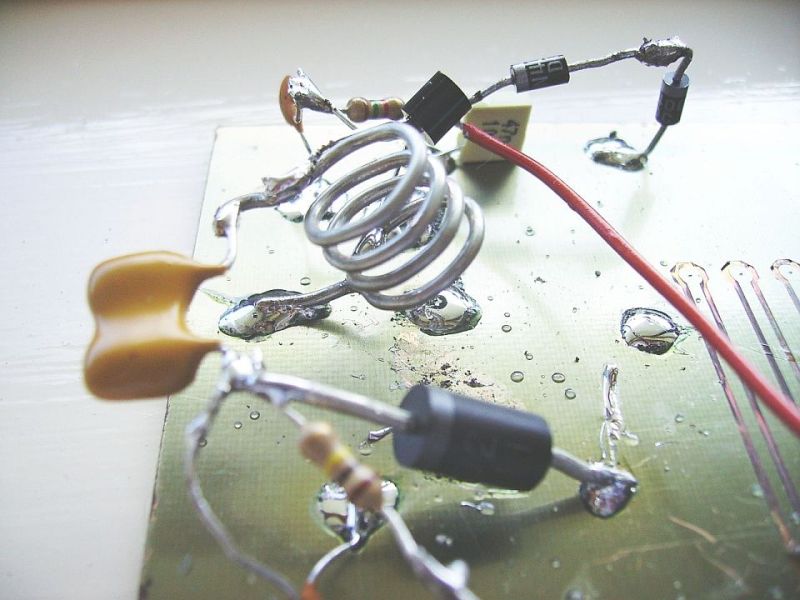
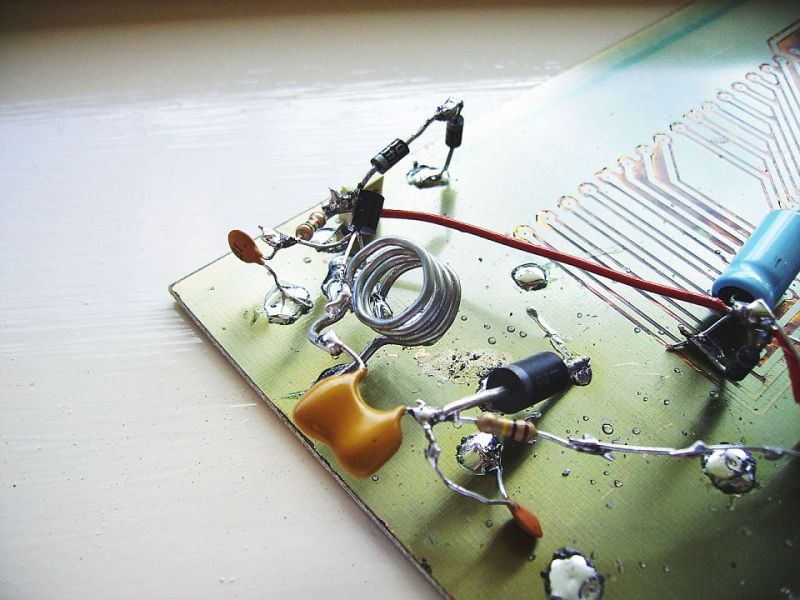
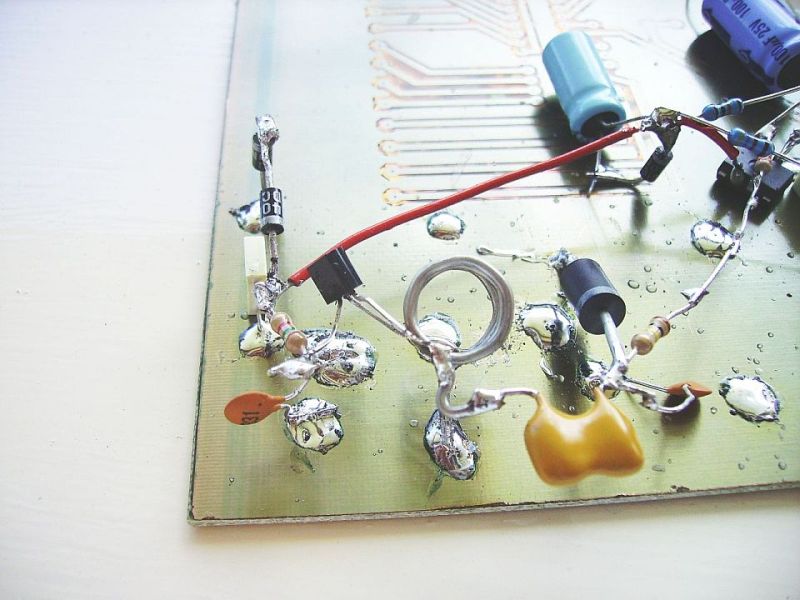

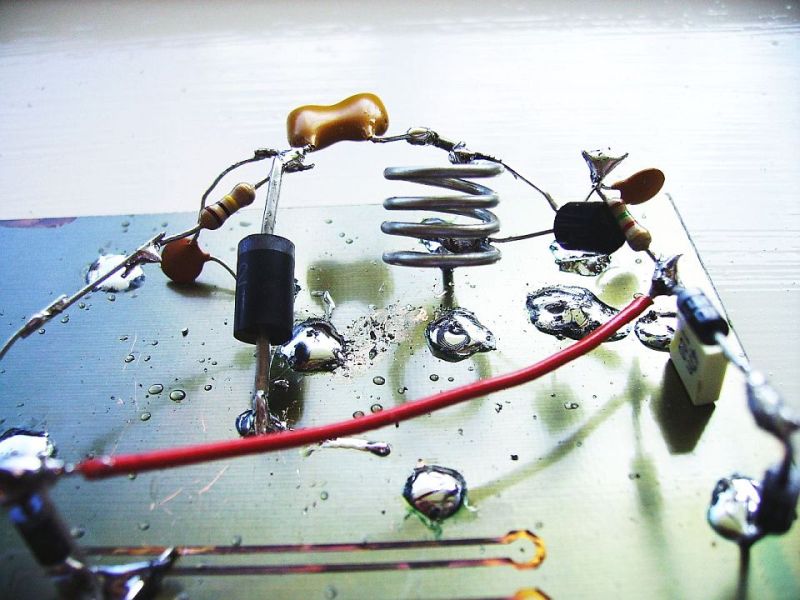
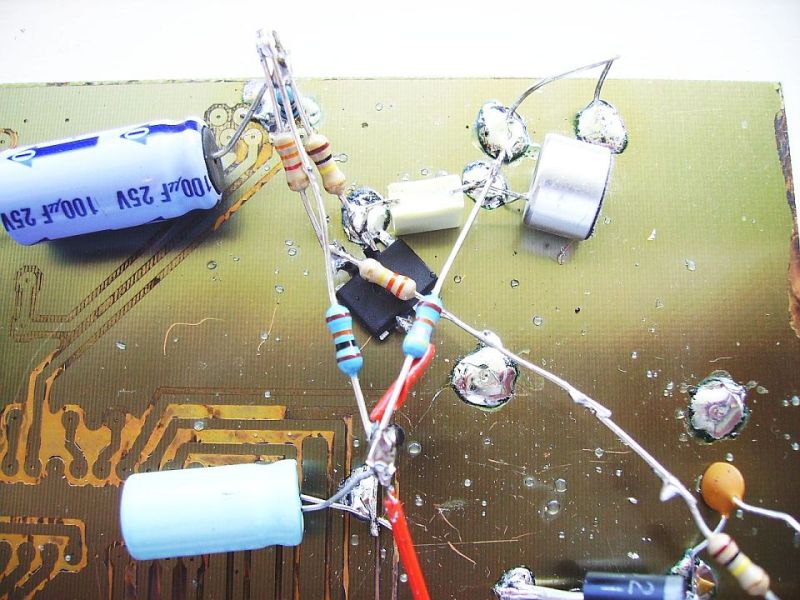
reviseOmatic V3
Contacts, ©, Cookies, Data Protection and Disclaimers
Hosted at linode.com, London







